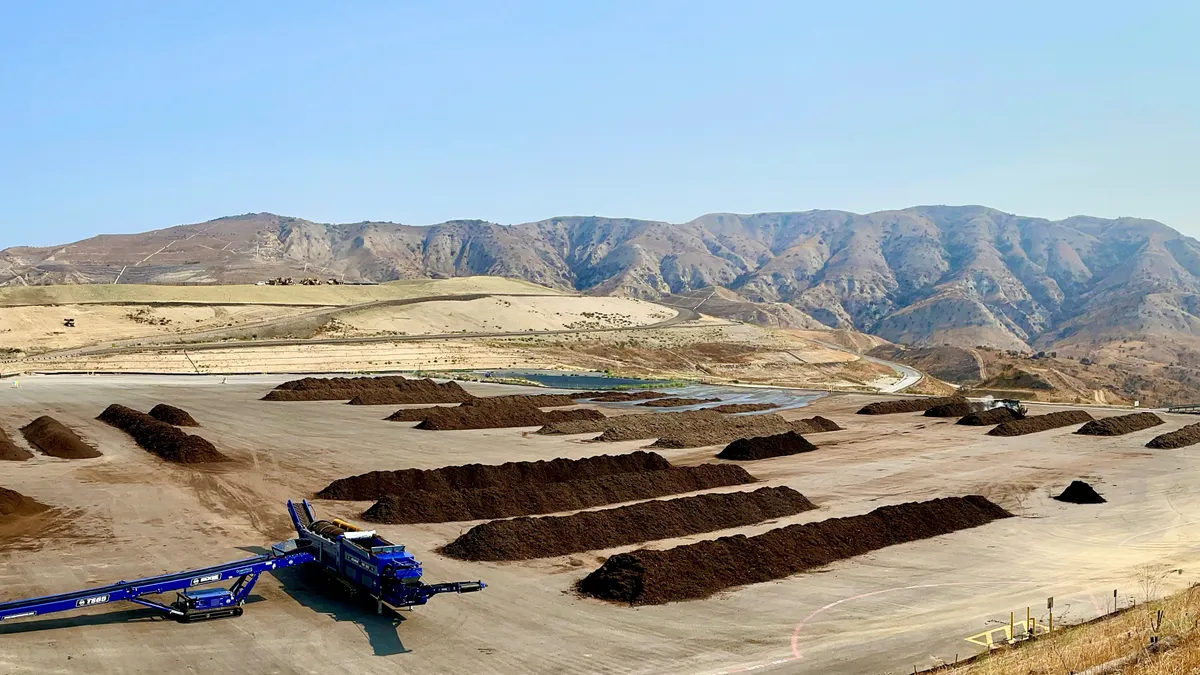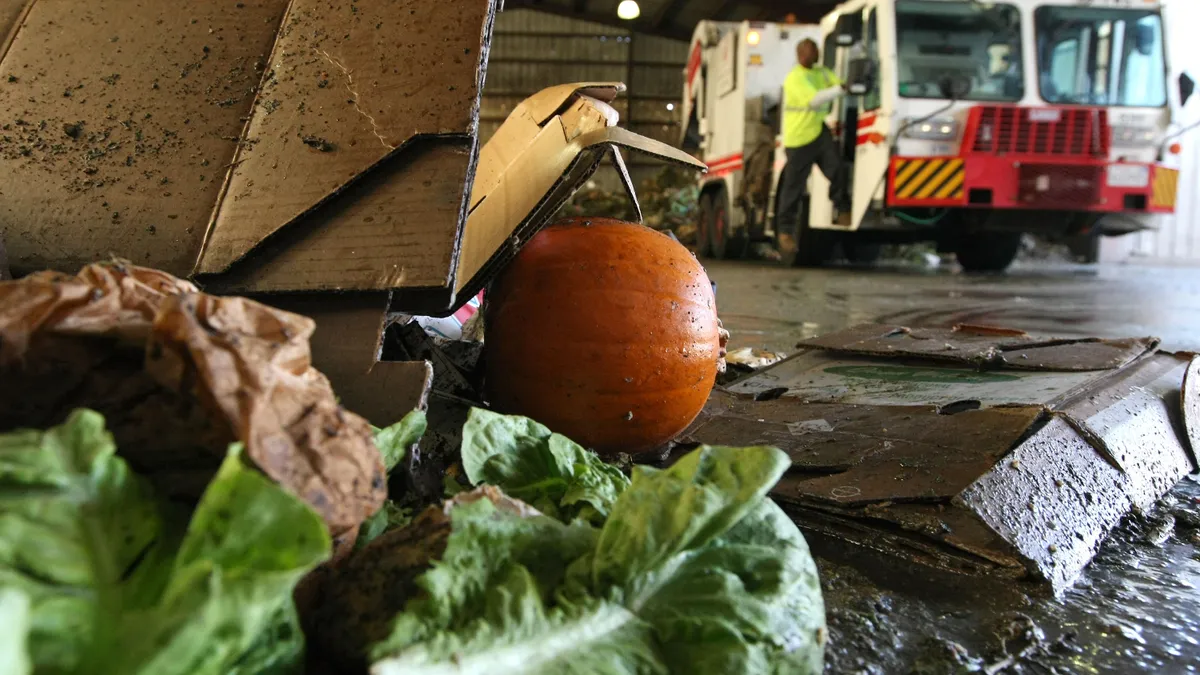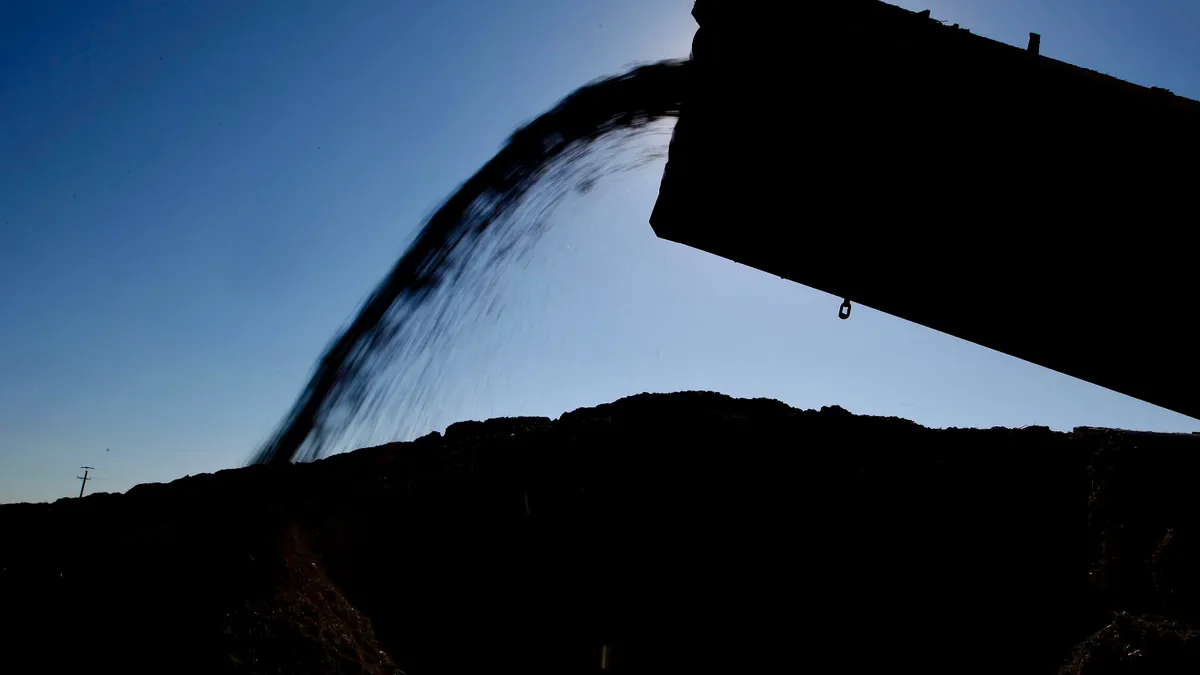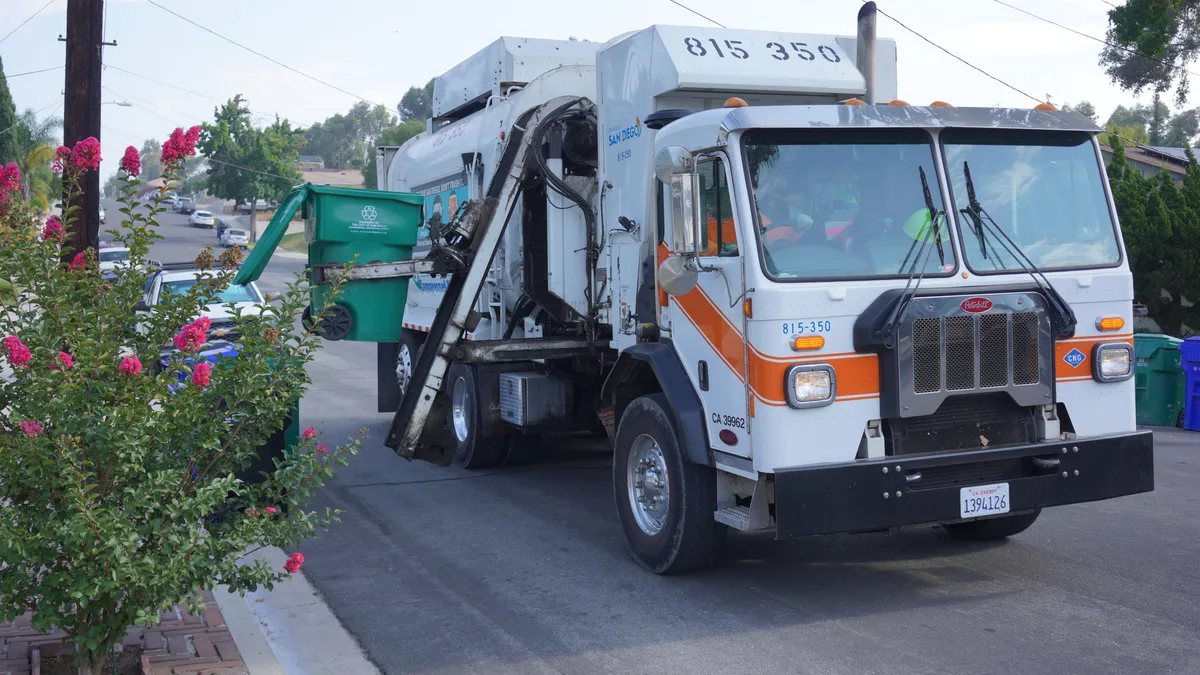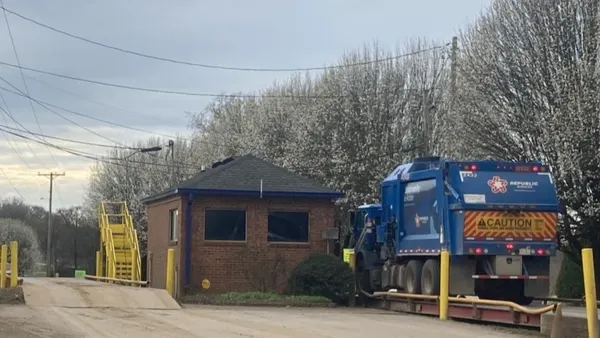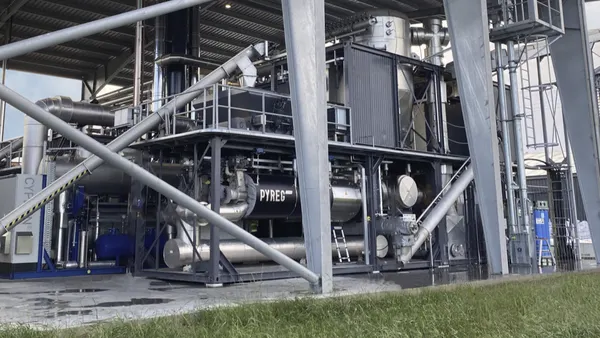Editor’s note: This is the sixth in a multipart series exploring the market effects of California’s sweeping organic waste reduction law, SB 1383.
What would waste industry business models look like if landfills were no longer the dominant materials management infrastructure? California’s new organics recycling law might be giving the first indications.
While California doesn’t have an imminent issue with disposal capacity like some states, growing awareness about how landfills contribute to climate change has added greater urgency to the implementation of SB 1383. Landfills have been categorized by CalEPA as the state’s second-largest category source of methane emissions, and the largest single point-source emitters in the state, at a time when methane’s potency is getting more attention on the world stage.
Public and private sector waste professionals often say landfills aren’t their preferred destination for many types of material. At the same time, low disposal tip fees in multiple regions of the U.S. are often raised as a comparison when deciding if its cost-effective to provide organics recycling service.
Policy requirements, such as California’s mandate to reduce organic waste disposal 75% by 2025, are seen as one way to change that equation. Now, landfill owners in the state are working to pivot their operating models. The collection approaches that private sector operators offer are evolving as well.
Implications for landfills
CalRecycle says the goal of SB 1383 is to reduce the volume of landfill-bound organics, but it’s too soon to know if the law will reduce the need to approve future landfill expansions, or how quickly it could make a difference in how much volume landfills are seeing.
Earlier this year, CalRecycle Director Rachel Machi Wagoner said between this law and other work on curbside recycling, she doesn’t foresee a need to permit any new landfills in the state. Ideally, she said, the state would not permit any further expansions either.
“It should be going the other direction,” said Wagoner. “That is not going to be a good business model, I don't think, going into the future.”
The nation’s most populous state has long grappled with the role of landfills, including research reports during the 1990s that sought to confirm how much capacity was remaining on a county level. Based on 1993 statistics, consultants for the state estimated that California could have as much as 28 years of capacity remaining at the time. Per capita waste generation rates and overall disposal volumes have both increased since then, though recycling volumes have also grown significantly.
While CalRecycle hasn’t published recent projections on landfill space, data collected by Waste Business Journal estimates that California’s landfills have at least 26 years of average remaining permitted capacity. The data also shows that public entities are the primary owners of landfills in the state, with an estimated 55% of capacity under their ownership.
It’s generally accepted that even with the full success of SB 1383 there will still be a need for disposal assets to handle other materials. Still, maximizing organics reduction and diversion could go a long way toward lengthening those lifespans. This expectation has already shifted priorities for multiple jurisdictions.
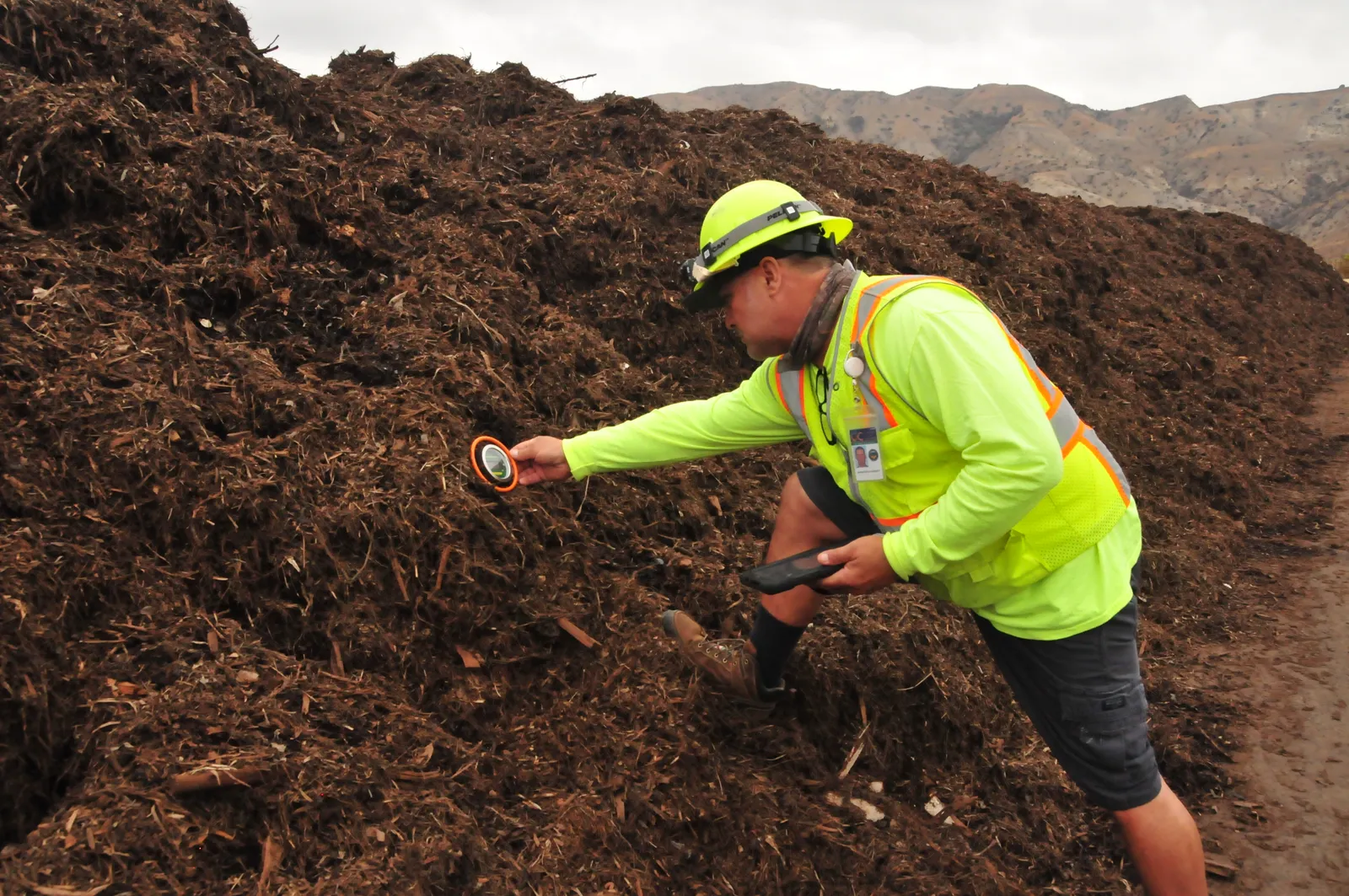
Orange County, the self-described home to some of California’s largest landfills, is a prime example. OC Waste & Recycling, a public agency that runs three landfills but no collection operations, began pivoting its operations to also include three compost sites starting around 2017. SB 1383 was one factor, as was another law (AB 1594) prohibiting the use of green waste as alternative daily cover.
“It’s been a transition in what we do as far as an agency, but also the mindset. Really it was all about push, spread, cover, protecting public health and the environment,” said Tom Koutroulis, director of OCWR. “Landfills are a finite resource. Our business model is to fill up and close. We go from being an asset to a liability."
Following recent permit updates, OCWR’s landfills are clear to operate until 2036, 2053 and 2102 respectively. But the agency anticipates notable volume reductions as SB 1383 kicks in, along with revenue shifts.
David Tieu, the agency’s deputy director of central region landfill operations, said the three green waste composting sites will eventually have 735 tons of collective capacity with open windrow composting and the agency is getting more efficient at permitting and constructing them as it goes.
OCWR’s third site is on track to open in the coming months with a windrow system, but it will eventually have a more advanced covered aerated static pile technology for food waste composting. The agency intends to roll out a similar system at its other two sites to scale up food waste composting from there, given a lack of available processing infrastructure in the region that Koutroulis said means “there’s going to have to be a heavy investment in Southern California.”
Speaking in 2021, OCWR said it was moving as fast as it could to get ready, in what Koutroulis described as a “sprint versus a marathon,” but like many others around the state the lift to comply with SB 1383 will be a large one. OCWR received a $3 million grant from CalRecycle earlier this year that will allow it to scale up certain composting operations more quickly. OCWR anticipates its third composting site will be open by early 2023.
While the example of OCWR is considered among the most notable shift, given how Southern California’s relatively low disposal tip fees have limited investment in organics infrastructure, multiple other local jurisdictions are similarly incentivized to extend the life of their disposal sites or shift priorities.
San Diego’s Miramar Landfill is going to host a composting operation for the city’s material, while hopefully seeing its lifespan preserved to 2030 or beyond.
Placer County’s Western Regional Sanitary Landfill is permitted to receive waste until 2058, but expects to reach capacity sooner without an expansion. Western Placer Waste Management Authority previously said no final decisions have been made and it hopes this expansion would be a last resort.
“If we’re able to keep stuff out of the landfill then we extend the life of that asset and expend less money in development of that landfill,” said WPWMA Program Manager Eric Oddo. “I would love to not have to develop that land as a landfill.”
Like with any regulation, observers also note that much of this will come down to how the law is enforced and how market factors recognize the value of this change.
“One could argue if you take the organics out of the landfill that does really lead to a very significant reduction in methane emissions,” said Nora Goldstein, editor and publisher of BioCycle, adding that this could theoretically have its own quantifiable value. “There has to be an equally strong dollar value on the recycled organics and getting that back to agricultural production, for example, so there’s a reduction in chemical fertilizer use, which is a fossil fuel.”
From a national perspective, this transition could possibly have financial implications for major companies operating in the California market — a list that includes the U.S. industry’s three largest players. According to the Waste Business Journal data, Republic Services, WM and Waste Connections are respectively the largest owners of private sector landfill capacity in the state.
The latest annual filings from Republic, WM and Waste Connections all note in varying forms that while diversion activities can be environmentally beneficial and present new business opportunities, they can also affect the operational and profit potential of their landfills — which in WM’s case “currently provide our highest income from operations margins.”
“The diversion goals imply significant reduction in landfill volumes, so there is clearly some trade-off to be considered,” said Noah Kaye, senior research analyst at Oppenheimer & Co., adding that at the same time “it should manifest in higher collection prices and higher tip fee prices as well.”
While this all presents a potential financial offset for any lost disposal revenues, Kaye (and others, such as CalRecycle) also predict it could have further ripple effects.
“More bins creates more revenue opportunities on the collection side and actually probably reduces the cost of processing because you don’t have commingled streams, so it reduces contamination rates,” he said.
The collection business model
Collection is traditionally the most profitable line of business for private haulers, but companies’ strategies in the SB 1383 landscape may differ based on the types of assets they own.
Some observers think large haulers prefer a source-separated program with three bins due to a profit motive. In looking at who supported SB 1383 in the final weeks of legislative negotiations in August 2016, some of the state’s largest haulers were on the list. Yet people involved in the process don’t believe the profit framing is fair.
“I think that they acknowledged that this is where the state wanted to go for climate reasons and came to the table and said ‘alright, how can we make this work,’” said Nick Lapis, director of advocacy for bill supporter Californians Against Waste. “They definitely weren’t the ones pushing this and a lot of the negotiations were with them.”
According to legislative reports from the final weeks of that session, Republic Services, Recology and CR&R were among the only haulers listed as publicly supportive of the bill.
Representatives of organized labor, another key group with a stake in this system, said that source separation of course creates more jobs because of the need for additional routes but disagreed that profit motive was the main factor.
"For elected officials who adopted those policies I think the main driver was the environmental goals. It just happened to be a win-win for labor as well, and there’s nothing wrong with that,” said Jim Smith, political coordinator with Teamsters Local 396, adding this approach can also lead to higher quality material.
Athens Services, a company that doesn’t specifically focus on three-bin collection, said a key consideration for its own model is driven by infrastructure.
“We’re not in the business of owning landfills, we’re in the business of developing technology that diverts from landfills,” said Executive Vice President Gary Clifford.
Athens, which services Los Angeles and other areas in Southern California, has multiple sites that can process various types of organic material. This includes the company’s American Organics composting site (permitted for up to 320,000 tons per year). In some cases, Athens also prepares material to be handled at third-party anaerobic digestion facilities.
While the company has seen multiple municipal customers recently switch to three-bin systems, which it believes is due to a perception that this is an easier way to comply with the SB 1383 regulations, it still touts a range of options.
Clifford said in his view it’s best to process disposal-bound containers to capture all possible recyclables first, even if that may cost more, which is considered different than some larger competitors.
“We have to figure out ways to not go to a landfill and that’s why we have these different systems in place,” said Clifford. “I think that they like the three-barrel system because they can take the black barrel directly to their landfill because that fits their business model of landfill disposal. Our model is processing first if we can, and that requires more resources.”
Others also view SB 1383 as a potential inflection point for haulers. While much attention has been focused on the rollout of residential programs, commercial accounts are another area that could change how the waste industry operates.
J. Michael Huls, an adjunct professor at Santa Monica College and long-time industry consultant, said it’s important to focus on these larger generators that may comprise a smaller share of overall accounts but generate a majority share of the waste. Finding ways to get creative with this stream can help haulers maintain business, regardless of collection frequency or other traditional considerations.
“I think part of the problem for some of the trash haulers is they haven’t got out of this mindset of being a trash company. They need to be a resource company,” said Huls.
“Not having to pick up something is not good business for a collector. But if they can make money by not collecting — by let’s say leasing out a package unit or micro-composting and being allowed to charge for their services in that way — they become more of a service company."
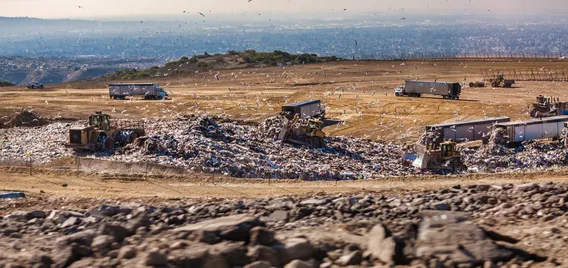
Looking ahead
The complex rollout of California’s organics policy means it could still take years to see a sizable reduction in landfills volumes – but the program’s success hinges on that happening.
The state estimates around 20 million tons of organic material must be diverted from landfills each year to meet these targets, more than double the amount of material that was categorized as composted or anaerobically digested in the state’s latest data from 2020. That may seem daunting, based on the many logistical and infrastructure factors involved, but professionals say progress should start showing up incrementally.
“There should be less tonnage going to landfills and more tonnage going to organics facilities even this first year,” said Clifford.
As for whether the widespread expansion of organics collection by the industry’s largest haulers could have ripple effects in other states that don’t have their own policy drivers in place, Kaye of Oppenheimer said changes in California are material to any business and the potential to expand investment into new technologies — while possibly reducing costs over time — could apply beyond the state.
“As that occurs and the economics become more compelling, there’s opportunities to take those technologies into new state markets and global markets as well,” he said, noting it’s all about what the economic tipping point is for the concept to be considered economically feasible in a given area.
Washington became the latest state to pass an organics recycling law this year, with a policy that was modeled in part on SB 1383 and calls for 75% diversion by 2030. Multiple other states also have less robust policies, along with other municipal or county policies that affect regional markets. And broader interest in reducing disposal costs, as well as related greenhouse gas emissions, has led to substantial investment in organics recycling regardless of policy drivers.
During this year’s WasteExpo, Republic CEO Jon Vander Ark said customers are increasingly willing to pay more for curbside recycling service than waste collection. He described organics recycling as “the next opportunity,” albeit one that will happen on a state-by-state basis.
“Twenty percent of what goes in our landfill is organic material and I think there’s lots of different innovation on the post-collection side. No one has really gotten that right, either from an economics or a performance standpoint to be consistent yet, but I think that's a matter of time,” he said. “We're going to be having a very different conversation certainly 10 years from now, but maybe as soon as five years from now.”
Stay tuned for Part 7, which will look at recent questions about whether the state can meet its targets and implementation challenges that industry participants are facing.


